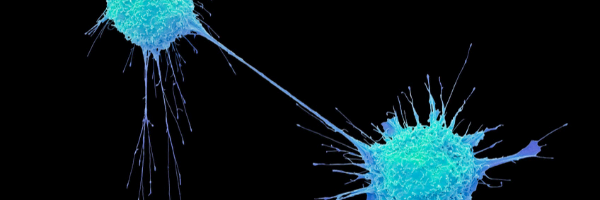T helper cells are a type of white blood cell that play a central role in regulating the immune system. They are essential for orchestrating immune responses, ensuring proper defense against pathogens, and maintaining tolerance to prevent autoimmunity. But they also play a role in the development of autoimmune disease. They stimulate other white blood cells call B cells to produce antibodies against our self. They also produce chemical messengers called cytokines and chemokines that promote the autoimmune attack. Understanding which T helper subtype is dominant can help determine specific treatment, for both conventional medicines and natural supplements.
Advances in the role of helper T cells in autoimmune diseases
TH-1 Dominance
- Cell mediated immune response – Natural killer and cytotoxic T-cell activity
- Delayed-type hypersensitivity, intracellular pathogens defense
- Patient that “seldom gets sick”
- Tends to go with rheumatoid arthritis, multiple sclerosis, type 1 diabetes, Hashimoto’s and psoriasis.
- Stimulated by IL-12, Tbet transcription factor
- Produces IL-2, TNF-alpha, Interferon-gamma
TH-2 Dominance
- Humoral immune response – B-cell activity
- IgE production, extracellular pathogens, eosinophilic inflammation and the protection for helminthic parasite infection.
- Patient that “is always sick” or has allergies
- Tends to go with systemic Sclerosis, ulcerative colitis, asthma, eczema and lupus
- Stimulated by IL-4, GATA3 transcription factor
- Produces IL-4, IL-5, IL-13, IL-25
TH-17 Dominance
- Respond to fungi, extracellular and gram negative pathogens
- Involved in autoimmune inflammatory disorders
- Require the combination of IL-6 and TGF-β and the transcription factors, RORC2/RORgt (mice) and STAT3 for differentiation
- Stimulated by TGF-beta, IL-6 and Roryt transcription factor
- Produces IL-17, IL-21, TNF-alpha, IL-22, IL-17F, and CCL20
T-Regulatory
- Responsible for maintaining peripheral tolerance, regulates immune balance, prevents autoimmunity
- Stimulated by TGF-beta, IL-2 and Foxp3 transciption factor
- Produces TGF-beta, IL-10
TH-9
- Antitumor and prevents autoimmunity
- Stimulated by TGF-beta, IL-4 and Stat6 transcription factor
- Produces IL-9
TH-22
- Plays roles in various immune responses and inflammatory conditions, particularly in skin-related diseases
- Stimulated by IL-6, TGF-beta, TNF-alpha, and AhR transcription factor
- Produces IL-22
TH-fh (follicular helper)
- Prevents autoimmunity
- Play a crucial role in regulating B cell responses within the germinal centers of lymphoid tissues, particularly in the context of antibody production and affinity maturation.
- Stimulated by IL-6, IL-21, Bcl6 transcription factor
- Produces IL-6, IL-21, TGF-beta
NKT (Natural Killer T cells)
- Unique subset of T lymphocytes that share characteristics with both conventional T cells and natural killer (NK) cells
- Plays roles in immune regulation, host defense against infections, tumor surveillance, and autoimmune diseases
- Bridge innate and adaptive immunity by rapidly responding to lipid antigens and influencing the activation and function of other immune cells, including dendritic cells, B cells, and conventional T cells.
- Produce IFN-gamma, IL-4
Here’s a quick, practical cheat-sheet listing cytokines. Many cytokines are context-dependent; below are their typical roles.
Pro-inflammatory (promote activation, fever, leukocyte recruitment)
- IL-1α/IL-1β – fever, endothelial activation
- TNF-α – vascular leak, shock at high levels
- IL-6 – acute-phase response, fever
- IFN-γ – macrophage activation (Th1)
- IL-12 – drives Th1 differentiation
- IL-17A/F – neutrophil recruitment (Th17)
- IL-23 – maintains Th17 cells
- GM-CSF – myeloid activation/recruitment
- IL-18 – boosts IFN-γ; inflammasome-linked
- Type I interferons (IFN-α/β) – antiviral, can amplify inflammation
- IL-33, IL-25, TSLP – “alarmins” that drive type-2 inflammation (allergy/asthma)
- IL-8/CXCL8 – neutrophil chemotaxis (chemokine; often grouped with pro-inflammatory)
Anti-inflammatory / Immunoregulatory (limit or resolve inflammation)
- IL-10 – broad suppression of macrophages/T cells; key tolerogenic cytokine
- TGF-β – immune regulation, Treg and tissue repair (fibrosis risk if excessive)
- IL-1Ra – natural IL-1 receptor antagonist
- IL-4, IL-13 – dampen Th1/Th17 responses (though pro-allergic/type-2)
- IL-27 – restrains Th17/Th1; promotes IL-10
- IL-35 – Treg-derived suppressive cytokine
- IL-37, IL-38 – IL-1 family members with anti-inflammatory effects
Notes to interpret panels
- Th1-leaning: ↑IFN-γ, IL-12
- Type-2 (allergic): ↑IL-4, IL-5, IL-13, IL-33/TSLP
- Th17-leaning: ↑IL-17A/F, IL-23, GM-CSF
- Regulatory tone: ↑IL-10, TGF-β (and sometimes IL-27/IL-35)
Compounds that stimulate TH-1 (downregulate TH-2)
- Astragalus
- Echinacea
- Berberine
- Andrographis
- Sambucus nigra (black elderberry)
- Mushrooms (beta-glucan, maitake)
- Glycyrrhiza
- Melissa officinali
- Lemon balm
- Mushroom
- Sulforaphane
- Ginger
- Ginseng
- Zinc
- Glutathione
- Vitamin C
- Resveratrol (modulates)
Compounds that stimulate TH-2 (downregulate TH-1)
- Caffeine
- Green tea extract
- Pycnogenol
- White willow bark
- Grape seed extract
- Resveratrol
- Lycopene
- Pine bark extract
- Antioxidants in berries
- Caffeine
- Pycnogenol
- Genistein
- Curcumin (modulates)
- Quercetin (modulates)
- Resveratrol (modulates)
Compounds that downregulate TH17 Dominance
- Probiotics: L. salivarius , L. plantarum
- Curcumin
- Berberine
- EGCG
- Ursolic acid
- Andrographolide
- Black Cumin Seed Oil
- Olive leaf extract [81, 82]
- Fisetin [83] (inhibits IL-17)
- Chinese Skullcap/Baicalin [84, 85] (Number of Th17 and IL-17)
- NAG [86]
- Red Yeast Rice/statins [20] – synergizes with corticosteroids
- Grape Seed Extract [87, 88] (STAT3-)
- Boswellia [89]
- R-Lipoic Acid [90]
- Epimedium/Icariin [91]
- Apigenin [92]
- Honokiol
- CBD [94]
- Galantamine [95, 96, 97]
- Huperzine A [95]
- Butyrate [98] – but increases it in response to an infection [99]
- Cinnamon/NaB [100] (increases IL-17)
- Artemisinin [101]
- Beta-Caryophyllene [102]
- Resveratrol* [103, 104] (conflicting)
- Probiotics: Enterococcus faecalis [105], (Mice)
- Parthenolide [106] – IL-17A [107]
- Ancient Wheat [82]
- Licorice/Lico A [108] (uncertain) [109]
- Ginger extract [110]


